 The state of Delaware was situated in the 2nd Corps area along with New Jersey and New York. In Roosevelt’s Forest Army, hidden about halfway through his rundown of CCC work in Delaware, Perry Merrill tosses out a unique factoid that sets Delaware apart from all other states and territories. Basically, Merrill notes that Delaware was the last state to get CCC camps. Evidently, the purchase of just over 1,000 acres for the Redden State Forest cleared the way for establishment of CCC camps so the first Delaware camp wasn’t established until October 1933 during the second enrollment period. That first camp, Camp S-53-D was quickly occupied by Company 2233V, company of World War I veterans who were moved from a project in nearby Vermont. So, while the total available information about the CCC in Delaware may be limited, there will always be that one interesting statistic: Delaware was the last state to have CCC camps.
The state of Delaware was situated in the 2nd Corps area along with New Jersey and New York. In Roosevelt’s Forest Army, hidden about halfway through his rundown of CCC work in Delaware, Perry Merrill tosses out a unique factoid that sets Delaware apart from all other states and territories. Basically, Merrill notes that Delaware was the last state to get CCC camps. Evidently, the purchase of just over 1,000 acres for the Redden State Forest cleared the way for establishment of CCC camps so the first Delaware camp wasn’t established until October 1933 during the second enrollment period. That first camp, Camp S-53-D was quickly occupied by Company 2233V, company of World War I veterans who were moved from a project in nearby Vermont. So, while the total available information about the CCC in Delaware may be limited, there will always be that one interesting statistic: Delaware was the last state to have CCC camps.(Now, here’s a question to ponder. It has long been thought that CCC camps were numbered in the order that they were established within each state. Thus, the first camp to be established in Delaware would be S-1-D, or so one would assume. Why was Delaware’s first camp numbered “53”? I’ve no idea but thought it would be an interesting question to toss out there.)
The State of Delaware has a scanned image of typewritten song lyrics penned by an enrollee at a CCC camp in Lewes, Delaware. The website notes that Delaware’s CCC camps were located in Lewes, Magnolia, Leipsic, Georgetown, Slaughter Beach, Frederica and Wyoming and that one of the main projects of the CCC was construction of drainage ditches for mosquito control.
There is one blog entry about the CCC at the State of Delaware’s blog site and you can view it here. It’s a neat little piece about mosquito control.
Merrill notes that the maximum number of CCC camps to operate in Delaware was 8 and that all but one (the aforementioned Camp S-53-D) were soil conservation and mosquito control camps. Even for its small size, an average of 5,382 Delaware men were given employment because of the CCC.
If we compare Merrill’s camp total against the Annual Reports for fiscal years 1937 and 1939 we find that between July 1936 and June 1937 Delaware had 1 state forest camp, 4 mosquito control camps, 2 agricultural engineering camps and 1 military reservation camp for a total of 8 camps. For the same period between 1938 and 1939 Delaware only had 4 CCC camps, broken out as follows: 1 state forest camp, 1 biological survey camp, and 2 agricultural engineering camps.
Delaware’s overall specific project totals (cited in Merrill’s Forest Army) include:
Trees Planted: 274,000
Channel Cleaning/Flood Control: 12,682,774 square yards
Forest Stand Improvement: 692 acres
Mosquito Control: 52,874 acres
In the state forests of Delaware, CCC enrollees worked at establishing forest boundaries through surveying and marking, construction of truck trails, timber salvage, collection of seedlings, reducing fire hazards and reforestation. A section of forest called the Red Lion Tract was donated to the state of Delaware in 1930, but it wasn’t until the arrival of the CCC that work was begun to reforest the acreage with loblolly pine, shortleaf pine and Scotch pine.
The Annual Report of the Director of Emergency Conservation Work for fiscal year 1937 lists the monthly totals for enrollment in Delaware as follows:
July 1936: 485
August 1936: 437
September 1936: 336
October 1936: 405
November 1936: 387
December 1936: 369
January 1937: 421
February 1937: 408
March 1937: 319
April 1937: 334
May 1937: 285
June 1937: 254
These monthly totals reflect the number of young men who enrolled in the state of Delaware, not the total number of CCC boys working in the state of Deleware.
If we drill down a bit deeper into the state-by-state numbers in the 1937 Annual Report we’ll find that Delaware gained the following improvements between July of 1936 and June of 1937:
Vehicle bridges: 2
Sewer lines: 1,183 linear feet
Field planting/seeding: 33 acres
Fire hazard reduction (“Road & Trailside”): 6.7 miles
Fire hazard reduction (“Other”): 293.0 Acres
Mosquito control: 7,234 man days
The CCC Legacy maintains a camp listing and the entry for Delaware is reasonably short. The CCC Legacy list shows the following companies operated in Delaware on the dates indicated:
Co. 1224, November 1933 at Lewes, DE, Camp P-51
Co. 1224, April 1936 at Lewes, DE Camp MC-51
Co. 1226, November 1933 at Milford, DE, Camp P-51
Co. 1226, April 1936 at Milford, DE, Camp MC-52
Co. 1293, January 1936 at Georgetown, DE, Camp S-53
Co. 1295, July 1935 at Dover, DE, Camp MC-54
Co. 2213V, July, 1935 at Ft. DuPont, DE, Camp Army-1
Co. 3220, September 1935 at Georgetown, DE, Camp D-2/SCS-2
Co. 3221, October 1935 at Clayton, DE, Camp MC-55
Co. 3222, October 1935 at Wyoming, DE, Camp D-1
Co. 3269C, April 1938 at Dover, DE, Camp BS-1
The camp/company listings at the CCC Legacy website are simply representative and have been taken from the various camp strength listings for dates throughout the lifespan of the CCC.
The February 3, 1940 issue of Happy Days reported the death of a Delaware CCC enrollee from Company 3220, hit by an automobile. The microfilm image is poor; his first name was Dante and his last name looks like Corbyons.
The map image was taken from Stan Cohen's The Tree Army and highlights added to make it easier to read. To read the initial entry in the State-By-State series, click here.

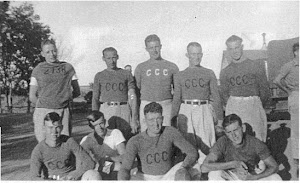

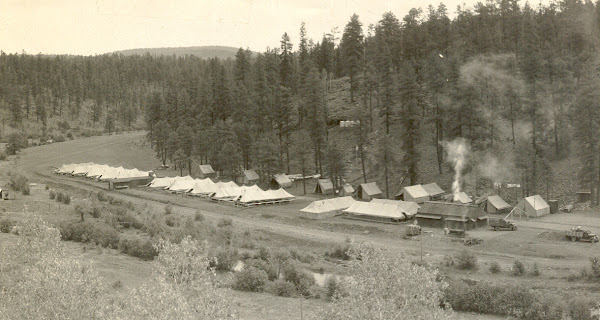

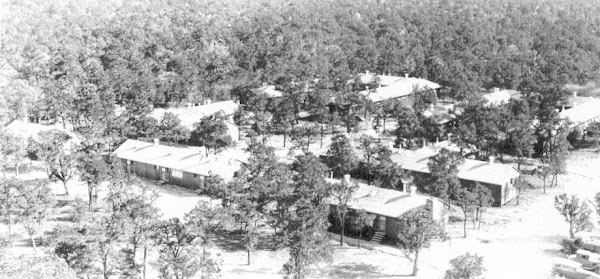



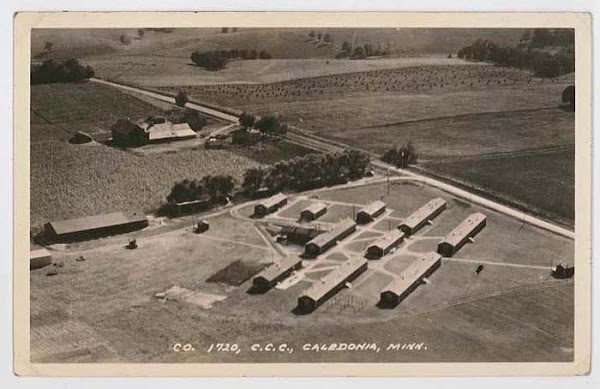
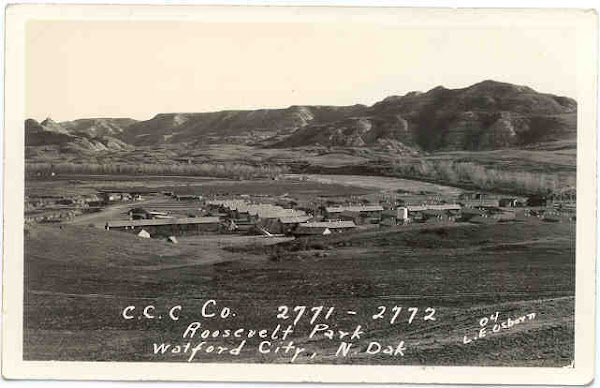
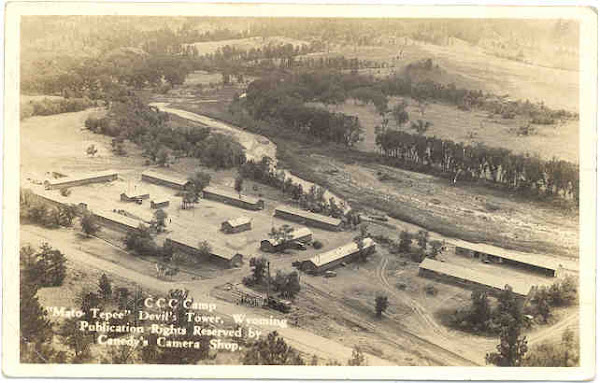
No comments:
Post a Comment